Best Luxury Home Decor to Create a Minimalist Sanctuary
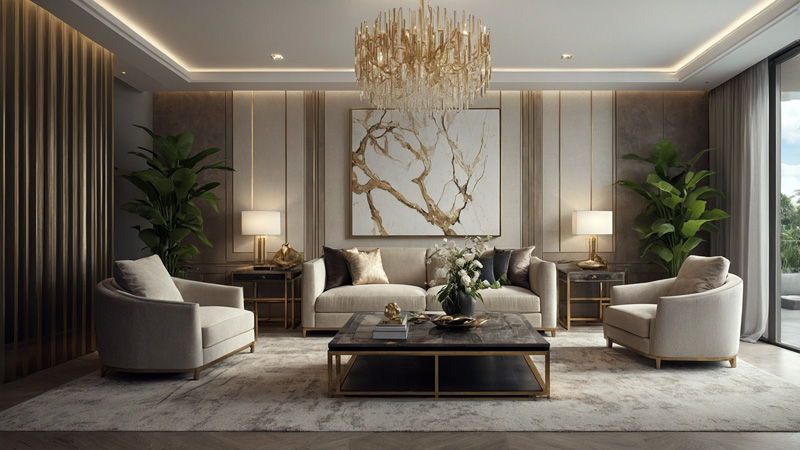
Contents
- 1. Redefining “Luxury” in Minimalism: It’s Not About the Price Tag
- 2. 3 Minimalist Traps to Avoid (And How to Fix Them)
- 3. The Perfect Neutral Palette: Warmth > Whiteness
- 4. Furniture: Less Pieces, More Purpose
- 5. Lighting: The Secret to “Cozy” Minimalism
- 6. Living Room: Where Less Is More (But It Still Feels Lived-In)
- 7. Bedroom: Your Personal Retreat (No “Showroom” Vibes)
- 8. Kitchen & Dining: Functional Luxury (Yes, It’s Possible)
- 9. 5 Designer Secrets for That “Effortless” Look
- 10. Maintaining Your Sanctuary: It’s a Habit, Not a One-Time Clean
- Final Thought: Your Sanctuary, Your Rules
You scroll through Pinterest, eyeing those “minimalist luxury” homes—sleek, uncluttered, and somehow warm. But when you try to replicate it? Your space feels either empty (like a hotel lobby) or cluttered (because you bought “essentials” that don’t quite fit). The truth? Minimalist sanctuary isn’t about owning less—it’s about owning more of what matters.
This guide breaks down how to craft that coveted balance: high-end without the fuss, calm without the cold. Perfect for anyone who wants a home that works with their life, not against it.
1. Redefining “Luxury” in Minimalism: It’s Not About the Price Tag
Let’s kill the myth first: Luxury minimalism isn’t about dropping $5k on a chair. It’s about pieces that earn their place—through story, quality, and how they make you feel.
What Makes a Piece “Luxury Minimalist”?
- Craftsmanship you can see (and touch): A hand-stitched linen cushion, a wooden table with visible grain (no fake veneer), a ceramic vase with slight imperfections (proof it’s made by human hands).
- Purpose with personality: A side table that holds your coffee and has a shelf for your favorite book. A lamp that lights your reading nook and has a base shaped like a sculptural art piece.
- Timelessness over trends: That marble tray? It’ll look just as good in 2030 as it does today. The leather ottoman? It’ll develop a rich patina over years, telling your story.
What to Ditch
- Logos, loud patterns, or “statement pieces” that scream “look at me.”
- Items that solve a problem you don’t have (yes, that “multi-functional” blender-toaster combo counts).
- Anything that requires constant upkeep (dry-clean-only throws in a house with kids? Hard pass).
2. 3 Minimalist Traps to Avoid (And How to Fix Them)
Even design pros mess these up. Here’s how to sidestep the most common pitfalls:
Trap 1: The “All White” Sterility
- Why it fails: An all-white room feels clinical, not calm. It shows every speck of dust, and sunlight turns it harsh by noon.
- Fix: Warm it up with “off-whites” (try Benjamin Moore’s “Simply White”—it has a soft cream undertone) and layer in 1-2 muted hues: sage green throw pillows, a terracotta planter, or a charcoal rug.
Trap 2: “Less = Empty”
- Why it fails: Removing clutter is good, but stripping a room of all personality makes it feel uninviting.
- Fix: Add “emotional anchors”—a vintage chair your grandma owned, a framed photo from your favorite trip (printed in black-and-white to keep it sleek), or a potted fiddle-leaf fig (lush, but not overgrown).
Trap 3: Matching Sets (Yawn)
- Why it fails: A “bedroom suite” with matching dresser, nightstands, and bed frame? It looks like a furniture catalog—impersonal and flat.
- Fix: Mix eras and materials. Pair a mid-century oak dresser (sleek lines) with a modern linen bed frame (soft texture). Add a brass lamp (warm metal) to tie them together.
3. The Perfect Neutral Palette: Warmth > Whiteness
Neutrals are the backbone of a minimalist sanctuary, but “neutral” doesn’t mean “boring.” It means creating a canvas that makes you feel at ease.
The Base Hues: More Than Just “Grey”
- Warm greys: Look for shades with brown or beige undertones (e.g., Farrow & Ball’s “Skimming Stone”). They read “calm” in morning light and “cozy” at night.
- Soft blacks: Ditch stark black—try “Iron Ore” (Sherwin-Williams) or “Charcoal” (Dulux). A black accent wall behind a white sofa? Instant depth without darkness.
- Earthy neutrals: Think “dried grass” green, “sanded stone” beige, or “ocean foam” blue. These hues mimic nature, which our brains find inherently calming.
How to Layer Them (Without Chaos)
- Pick 1 dominant color (e.g., warm grey walls).
- Add 2 secondary colors (e.g., a beige rug, sage green curtains).
- Finish with 1 accent (e.g., burnt orange ceramic bowls on a shelf).
Pro tip: Test paint swatches at different times of day—morning light can make a “warm grey” look blue, and evening light might wash it out.
4. Furniture: Less Pieces, More Purpose
In minimalist luxury, every furniture item should earn its spot. No “just in case” chairs or tables that collect mail.
The Living Room Essentials
- The sofa: Opt for a low-profile frame (no bulky arms) in a performance fabric (linen-cotton blend resists stains and looks luxe). Size? It should seat your family + 1 guest comfortably—no more.
- The coffee table: Skip glass (fingerprints!)—go for solid wood (oak, walnut) or marble with a wooden base. Round edges feel softer than sharp corners.
- Storage that hides in plain sight: A media console with closed cabinets (to tuck remotes, DVDs) or a ottoman with a lift-top (stash blankets, kids’ toys).
Bedroom Must-Haves
- A bed that breathes: Platform beds with slats (no box spring) feel airy. Choose a headboard in linen or wool—textured, but not busy.
- Nightstands with intention: Wall-mounted shelves (free up floor space!) or small wooden tables with 1 drawer (for your phone, lip balm, etc.). Skip anything with more than 2 shelves—they’ll collect clutter.
- A dresser that fits your actual clothes: Measure your wardrobe first. If you only need 4 drawers, don’t buy a 6-drawer behemoth. Look for clean lines—no excessive hardware.
5. Lighting: The Secret to “Cozy” Minimalism
Overhead lights? They’re functional, but they kill ambiance. Minimalist luxury lighting is about layers—light that adapts to how you use the room.
The 3 Layers Every Room Needs
- Ambient light: Soft, overall glow (e.g., a ceiling fixture with a fabric shade, or recessed lights on a dimmer).
- Task light: Directed light for reading, cooking, or working (e.g., a floor lamp next to the sofa, under-cabinet lights in the kitchen).
- Accent light: Highlights decor or architecture (e.g., a small lamp on a bookshelf, LED strips behind a headboard).
Fixture Styles That Work
- Floor lamps: Go for arc designs (they reach over sofas without cluttering) or slim, brass models (warm metal = instant luxury).
- Wall sconces: Choose ones with fabric shades (diffused light) or adjustable arms (point them at art or plants).
- Table lamps: Small, sculptural bases (ceramic, marble) with linen shades. Cluster 2-3 on a console table for a “collected” look.
Designer hack: Use warm white bulbs (2700K-3000K). Cool white (4000K+) reads “sterile”—think office, not home.
6. Living Room: Where Less Is More (But It Still Feels Lived-In)
Your living room should be where you Netflix, host friends, and maybe even work from time to time. The goal? A space that’s ready for life—without looking like it’s survived life.
The Focal Point: Keep It Simple
- A single piece of art: Large, minimalist prints (think abstract landscapes, black-and-white photography) in a thin black or wooden frame. Hang it 57 inches from the floor (eye level for most adults).
- A fireplace: If you have one, keep the mantel clear—just 1 vase or a stack of 3 coffee table books. Paint the fireplace surround the same color as the wall for a seamless look.
- A large window: Let natural light be the star. Use sheer linen curtains (no heavy drapes) that filter light without blocking it.
Seating: Comfort > Looks
- Sofa + 1 accent chair: That’s enough. The chair should complement the sofa (e.g., a linen sofa with a leather chair in a similar tone).
- Cushions = texture, not clutter: 2-3 cushions max. Mix fabrics (linen + bouclé) but stick to your color palette.
Storage That Doesn’t Look Like Storage
- Floating shelves: 2-3 in a row, mounted 12-18 inches apart. Use them for 1-2 books, a small plant, and a decorative box (to hide remotes).
- A basket in the corner: Woven jute or leather—big enough for throw blankets, small enough to tuck out of the way.
7. Bedroom: Your Personal Retreat (No “Showroom” Vibes)
Your bedroom should feel like a hug. Minimalist here means removing distractions, not joy.
The Bed: The Non-Negotiable
- Bedding matters: 100% linen sheets (they get softer with every wash) in white, cream, or light grey. A duvet cover in a slightly darker shade (adds depth without effort).
- Pillows: quality over quantity: 2 standard pillows (sleeping), 2 decorative shams (same fabric as the duvet), and maybe 1 lumbar pillow (for reading).
Nighttime Essentials (No Clutter)
- Wall-mounted lamps: Free up nightstand space. Look for brass or black metal with small shades—they cast a soft glow for bedtime reading.
- A small tray on the nightstand: Holds your phone, glasses, and a tiny candle (lavender or cedar for relaxation).
Storage That Hides the “Stuff”
- Under-bed drawers: Perfect for off-season clothes or extra linens. Choose ones on wheels for easy access.
- A wardrobe with sliding doors: They take up less space than hinged doors. Paint them the same color as the walls to make them “disappear.”
8. Kitchen & Dining: Functional Luxury (Yes, It’s Possible)
Minimalist kitchens and dining areas thrive on “calm efficiency”—no cluttered countertops, just tools that make cooking and eating a pleasure.
Kitchen: Clean Counters, Happy Chef
- Keep only daily-use items out: A coffee maker, a knife block, and a small bowl of fruit. Everything else (spices, pots) goes in cabinets.
- Open shelving? Be strict: If you have open shelves, stock them with matching white or neutral dishes. 2-3 stacks max—no random mugs.
- Backsplash: subtle texture: Subway tiles in soft grey or beige, or a single slab of marble (polished for modern, honed for rustic).
Dining Area: Make Meals Feel Special
- The table: Round or rectangular, solid wood or marble. Size? It should seat your family with 6-12 inches of space per person.
- Chandelier: small but mighty: A simple brass or black metal fixture, hung 30-36 inches above the table. It should be 1/2 to 2/3 the width of the table.
- Placemats: optional, but intentional: Woven cotton or leather in a neutral tone. Roll them up and store in a drawer when not in use.
9. 5 Designer Secrets for That “Effortless” Look
Pros make it look easy—but these tricks are simple to steal.
The “3-Item Rule” for Surfaces
Every shelf, table, or mantel gets 3 items max. Example: A lamp + a stack of books + a small plant. Odd numbers feel more natural than even.
Negative Space Is Your Friend
Leave 30-40% of each surface empty. A crowded shelf feels stressful; a sparse one feels calm.
Mix High and Low
Pair a splurge piece (e.g., a 2k sofa) with budget finds (e.g., a 50 thrifted wooden side table, sanded and refinished). It adds character and keeps the space from feeling “too perfect.”
Textures > Colors
Layer materials to add depth: A wool rug + a leather chair + a linen throw. They play off each other without clashing.
Fake “Lived-In” (But Not Messy)
Drape a throw over the arm of the sofa. Leave a book open on the coffee table. These small touches make the space feel “lived with,” not “staged.”
10. Maintaining Your Sanctuary: It’s a Habit, Not a One-Time Clean
Minimalist luxury isn’t about perfection—it’s about systems that keep clutter at bay.
Weekly Routine (10 Minutes Tops)
- Wipe down surfaces (counters, shelves) with a dry cloth.
- Put “strays” back: Mugs to the kitchen, pillows to the sofa, clothes to the hamper.
- Fluff cushions and straighten throws—small tweaks that make a big difference.
Monthly “Edit”
- Go through one drawer or shelf. If you haven’t used an item in 6 months, donate it.
- Check for duplicates: Do you really need 5 wooden spoons or 10 coffee mugs? Keep 3-4 of your favorites.
Seasonal Refresh
- Swap out throw pillows or blankets for ones in seasonal hues (e.g., soft pastels in spring, deeper greens in fall).
- Rearrange furniture: Move the accent chair to a new spot, or swap the art between living room and bedroom. It feels like a “new” space without buying anything.
Final Thought: Your Sanctuary, Your Rules
Minimalist luxury isn’t about copying a Pinterest board—it’s about creating a home that works for you. If a piece makes you smile every time you see it, it belongs. If it stresses you out (even a little), it’s time to let it go.
Ready to start? Pick one room, apply one tip this weekend, and build from there. Your calm, curated space is closer than you think.
P.S. Want help finding pieces that fit? Follow our affiliate links to brands we love—from linen bedding to handcrafted ceramics. Every purchase supports creators who care about quality as much as you do.


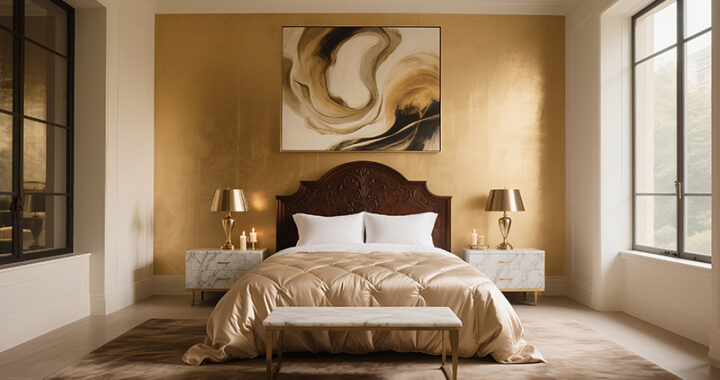 Home Decor Ideas to Make Your Home Feel Like a Luxury Hotel
Home Decor Ideas to Make Your Home Feel Like a Luxury Hotel 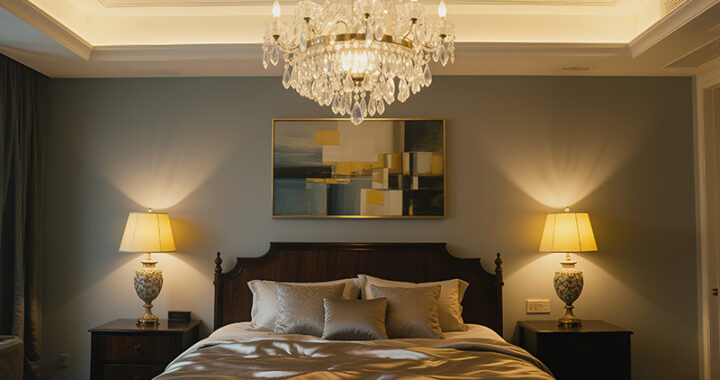 Best Luxury Accent Lighting for Every Room
Best Luxury Accent Lighting for Every Room 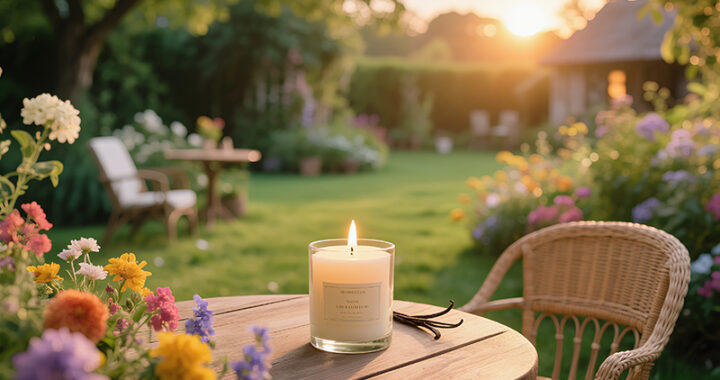 Best Luxury Candles for a Cozy and Elegant Home
Best Luxury Candles for a Cozy and Elegant Home 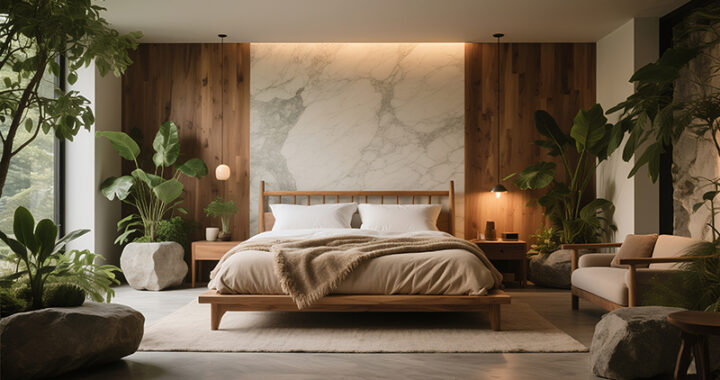 Best Luxury Bed Frames for a Stylish Bedroom
Best Luxury Bed Frames for a Stylish Bedroom 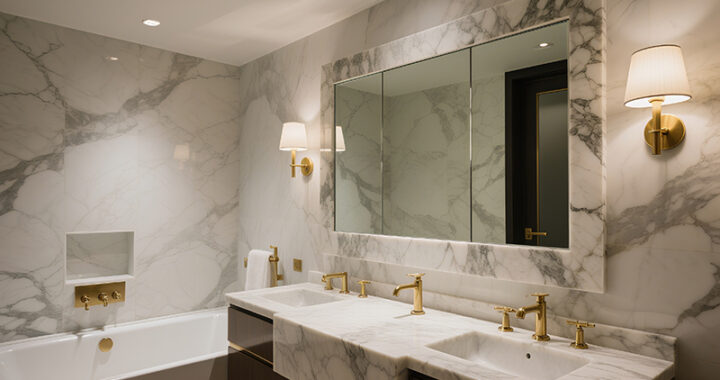 Best Luxury Bathroom Mirrors for a Stylish Touch
Best Luxury Bathroom Mirrors for a Stylish Touch 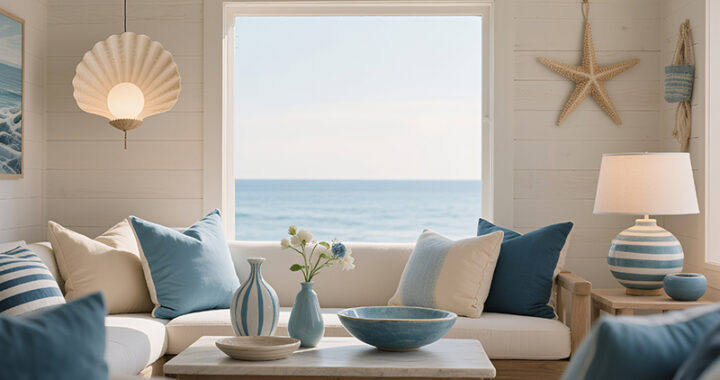 Luxury Coastal Home Decor Ideas: Elevate Your Beach House with Timeless Elegance
Luxury Coastal Home Decor Ideas: Elevate Your Beach House with Timeless Elegance